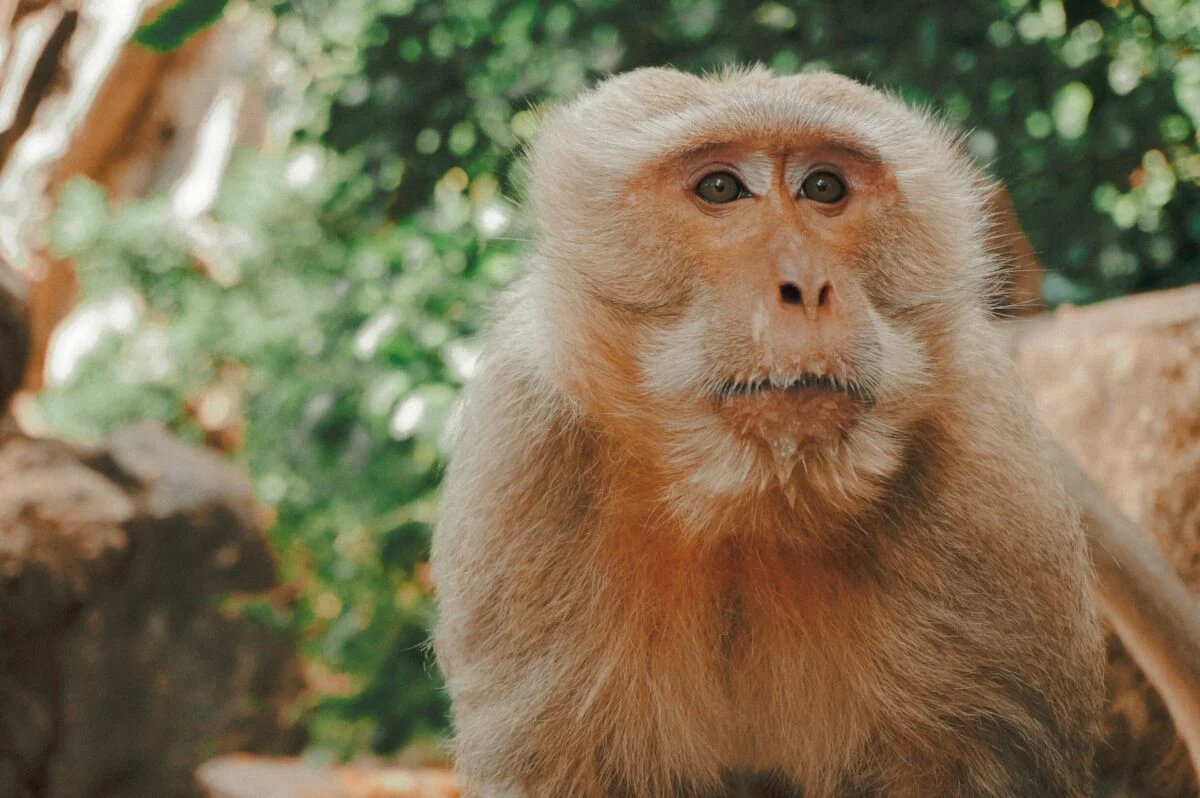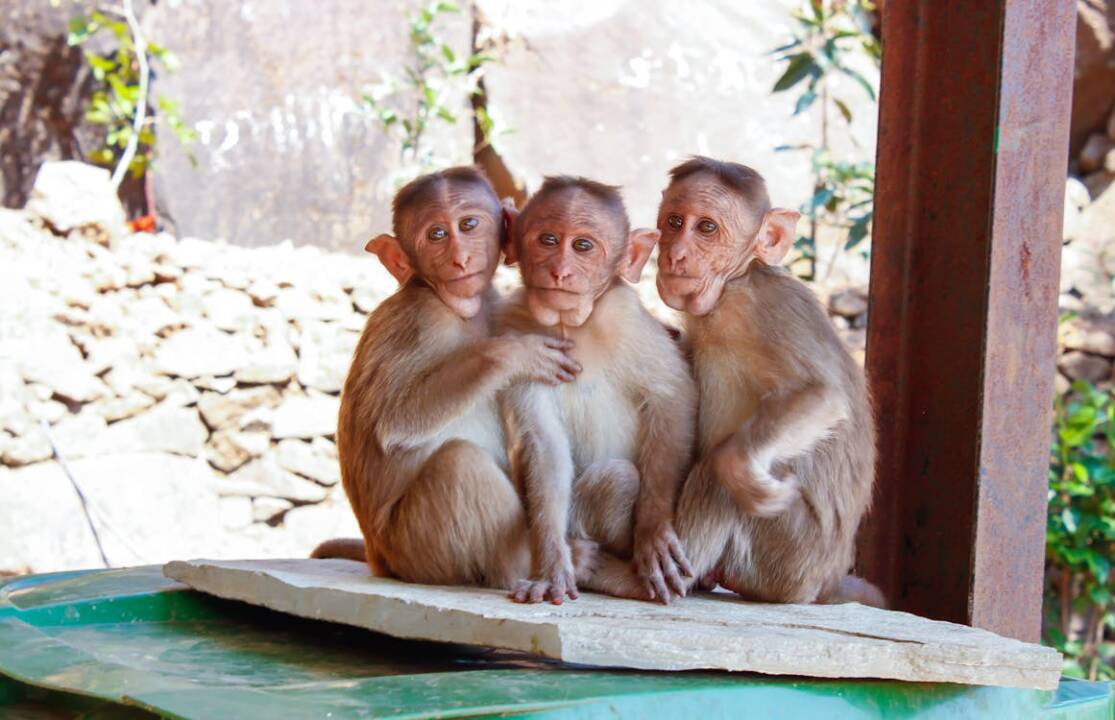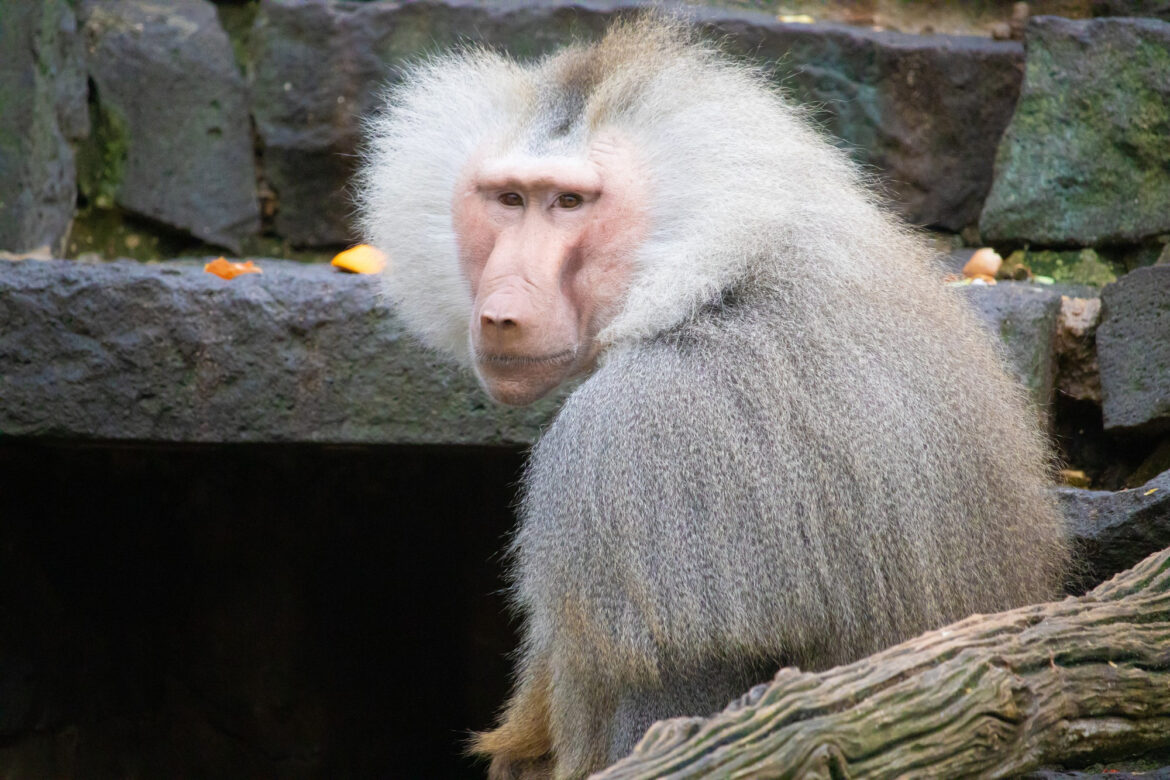Albino monkeys are some of the most fascinating creatures in the animal kingdom. Their distinct appearance, due to a rare genetic mutation, sets them apart from their peers. This comprehensive guide will cover everything you need to know about albino monkeys, from their biology and habitats to the unique challenges they face and the conservation efforts dedicated to their survival.
Table of Contents
ToggleWhat Is Albinism?
The Science Behind Albinism
Albinism is a genetic condition characterized by the complete or partial absence of melanin, the pigment responsible for the coloration of the skin, hair, and eyes. In albino animals, the gene that controls melanin production is either mutated or completely absent. This mutation results in white or pale-colored fur, pink or blue eyes, and, in some cases, sensitivity to sunlight.
To learn more about the science of albinism, visit Genetics Home Reference.
Albinism vs. Leucism
Although often confused with leucism, albinism is different. While leucism also causes a reduction in pigmentation, it allows for partial color in the skin and eyes. In contrast, albinism results in the complete lack of pigmentation throughout the body. To read more about leucism and how it differs from albinism, check out this detailed explanation by ThoughtCo.
Why Does Albinism Occur?
Albinism is a recessive genetic trait, which means that a monkey must inherit two copies of the mutated gene—one from each parent—to express the condition. This is why albinism is so rare in the wild.
What Do Albino Monkeys Look Like?
Albino monkeys are easily distinguishable due to their striking white fur and pinkish or blue eyes. They often have very pale skin and may appear almost ghost-like compared to their non-albino counterparts. Their eye color can range from light blue to pinkish-red due to the lack of pigment in their irises. This lack of pigment also makes their eyes sensitive to bright light, causing vision problems.

Key Physical Characteristics of Albino Monkeys
- White or Cream-Colored Fur: The lack of melanin causes albino monkeys to have extremely pale fur.
- Pinkish or Blue Eyes: Their eye color can appear pink or blue due to the absence of melanin, which normally gives eyes a darker color.
- Pale Skin: Without melanin, their skin appears almost translucent.
- Sensitivity to Light: Albino monkeys are more sensitive to sunlight and can suffer from skin burns and vision problems.
Visual Comparison: Albino vs. Non-Albino Monkeys
Check out this comparison image to see the striking differences between albino and non-albino monkeys.
Habitat and Distribution of Albino Monkeys
Albino monkeys live in the same habitats as their non-albino peers, which can range from tropical rainforests and savannas to mountainous regions. However, their distinct appearance makes it harder for them to blend into their environment, making them more susceptible to predators.

Common Habitats for Albino Monkeys
- Tropical Rainforests: Found in parts of South America, Africa, and Asia, these dense forests provide shelter but also pose visibility challenges for albino monkeys.
- Mountainous Regions: Albino macaques are sometimes found in mountainous regions of Asia, where their bright fur makes them easily noticeable against the landscape.
- Savannas and Grasslands: While rare, albino monkeys can also be found in open areas, making them even more vulnerable to predators.
For more information on monkey habitats, visit World Wildlife Fund’s Monkey Habitat Guide.
Unique Challenges Faced by Albino Monkeys
Albino monkeys face a range of challenges that other monkeys do not. Their distinct appearance, health issues, and social acceptance within their groups can significantly impact their survival and quality of life.
Increased Visibility to Predators
Albino monkeys’ pale fur makes them easy targets for predators such as big cats, birds of prey, and even other primates. Their inability to blend into their natural surroundings puts them at a constant disadvantage.
Health Issues Associated with Albinism
Due to their lack of melanin, albino monkeys are prone to several health problems:
- Sun Sensitivity: Their skin is more sensitive to sunlight, increasing their risk of sunburn and skin cancer.
- Vision Problems: The lack of pigmentation in their eyes can cause poor vision or even blindness. Learn more about vision problems in albino animals at Vision for All.
Social Acceptance Within Their Groups
In some cases, albino monkeys may be rejected or ostracized by their own social groups due to their unusual appearance. This can lead to social isolation and difficulty in finding mates, which can further reduce their chances of survival.
Types of Monkeys Known to Have Albinism
Albinism can affect any monkey species. However, it is most commonly reported in larger populations or in species with high genetic diversity. Some of the species where albinism has been observed include:
- Capuchin Monkeys
- Macaques
- Spider Monkeys
- Colobus Monkeys
- Baboon Species
For a complete list of primates with reported cases of albinism, check out Primate Info Net.
Conservation Efforts to Protect Albino Monkeys
Due to their rarity and the challenges they face, albino monkeys are often the focus of conservation efforts. Organizations around the world work tirelessly to protect these unique creatures.
Key Conservation Strategies
- Establishing Protected Areas: Setting up reserves and sanctuaries where albino monkeys can live safely without the threat of poaching or habitat destruction.
- Rescue and Rehabilitation: Providing care for albino monkeys that are found injured or in poor health.
- Public Education and Awareness: Educating communities about the importance of protecting albino animals and discouraging the illegal trade of these rare primates.
How You Can Support Conservation Efforts
You can support the conservation of albino monkeys by donating to reputable wildlife organizations, avoiding products made from illegal wildlife trade, and participating in awareness campaigns. Consider supporting organizations like the Jane Goodall Institute or the World Wildlife Fund.
Famous Albino Monkeys and Primates
Over the years, a few albino primates have become famous, drawing attention to the unique condition and the need for conservation.
Snowflake the Albino Gorilla
Snowflake was an albino Western lowland gorilla who lived at the Barcelona Zoo for over 30 years. He became a symbol of hope and awareness for albino animals worldwide. Learn more about his life at the Barcelona Zoo’s official website.
Kigali the Albino Baboon
Kigali was a rare albino baboon that lived in a sanctuary in South Africa. He was known for his playful nature and became an ambassador for raising awareness about albinism in animals.
Conclusion
Albino monkeys are truly remarkable creatures. Their rarity and unique appearance make them stand out, but they also face numerous challenges in the wild. Understanding their condition and supporting conservation efforts are crucial steps toward ensuring their survival. By raising awareness and supporting wildlife organizations, we can all play a role in protecting these beautiful and rare animals.
If you’d like to learn more about albino monkeys and other rare primates, visit the Primate Specialist Group’s website and consider contributing to their conservation efforts today.
Do you have more questions or want to share your thoughts about albino monkeys? Feel free to reach out or leave a comment below!
FAQs: Everything You Need to Know About Albino Monkeys
Albino monkeys are rare and intriguing animals that draw a lot of curiosity. Their unique genetic condition, distinct appearance, and the challenges they face raise many questions. To help you better understand these fascinating creatures, here are the most frequently asked questions about albino monkeys, along with in-depth answers.
1. What Causes Albinism in Monkeys?
Albinism in monkeys is caused by a genetic mutation that affects the production of melanin, the pigment responsible for the coloration of skin, fur, and eyes. The mutation can occur in several different genes that are responsible for melanin production, but the most common one is the OCA (Oculocutaneous Albinism) gene. When a monkey inherits two copies of the mutated gene—one from each parent—it results in albinism. This genetic condition affects not only the appearance of the animal but also has significant implications for its health and behavior.
Melanin plays a critical role in protecting the skin from UV rays and aiding vision by developing pigments in the eyes. Without melanin, albino monkeys are more susceptible to sun damage and vision problems, which can make it difficult for them to survive in the wild.
2. Are Albino Monkeys Considered a Different Species?
No, albino monkeys are not considered a separate species. Albinism is a genetic condition that can occur within any monkey species. It doesn’t change the fundamental biology of the animal or its classification. Whether it’s a capuchin, spider monkey, macaque, or any other type of monkey, an albino monkey is simply a member of its species that happens to have a genetic condition affecting its pigmentation.
The lack of pigmentation only alters their physical appearance, making them stand out visually, but it does not alter their behavior or other biological traits. As such, they are grouped with their naturally pigmented peers in the same species.
3. How Do Albino Monkeys Survive in the Wild?
Surviving in the wild can be a significant challenge for albino monkeys due to several factors:
- Increased Visibility to Predators: Their light-colored fur makes it difficult for albino monkeys to camouflage in their natural habitats. Predators can easily spot them from a distance, making them more vulnerable to attacks.
- Health Issues: Albino monkeys often have poor eyesight and sensitive skin due to the lack of melanin. Their eyes may be less able to perceive depth or see clearly in bright light, making it harder for them to navigate dense forests or climb trees effectively.
- Social Dynamics: Some albino monkeys may be rejected or ostracized by their social groups because of their unusual appearance. In primate societies, social bonds are crucial for protection, access to food, and mating opportunities. Being isolated or less socially accepted can significantly impact their ability to thrive.
Despite these challenges, some albino monkeys manage to survive by adapting to their environment, relying on family groups for protection, and staying in areas with less direct sunlight.
4. Do Albino Monkeys Have Special Dietary Needs?
No, albino monkeys do not have special dietary needs compared to non-albino monkeys. They eat the same foods as their normally pigmented counterparts, which typically include fruits, leaves, insects, and small animals, depending on their species.
However, due to their sensitive skin and vision problems, albino monkeys may need to spend more time in shaded areas or avoid direct sunlight. This can influence their feeding patterns, as they might choose to forage during dawn or dusk when the sun is less intense. In captivity, they might be provided with supplements such as vitamin D if they do not get enough natural sunlight exposure.
5. Are Albino Monkeys at Risk of Health Problems?
Yes, albino monkeys are more susceptible to certain health problems due to the absence of melanin:
- Vision Issues: Albinism often leads to underdeveloped retinas and other ocular issues, resulting in poor vision, light sensitivity, and in some cases, blindness.
- Skin Conditions: Without melanin, albino monkeys are more prone to sunburns and skin diseases. Long-term exposure to sunlight without protection can lead to skin cancer.
- Weaker Immune System: Some studies suggest that albino animals may have a slightly weaker immune system compared to their pigmented peers, making them more vulnerable to infections and diseases.
These health challenges can significantly affect the survival and quality of life of albino monkeys, especially in the wild.
6. Can Albino Monkeys Reproduce Normally?
Yes, albino monkeys can reproduce normally. The condition of albinism does not impact their reproductive capabilities. However, the chances of producing albino offspring are very low unless both parents carry the albinism gene.
If an albino monkey mates with a non-albino monkey that does not carry the albinism gene, the offspring will not be albino. If both parents carry the albinism gene but are not albino themselves (i.e., they are carriers), there is a 25% chance of producing an albino offspring. If both parents are albino, the likelihood of having albino offspring increases significantly.
7. Do Albino Monkeys Have Social Challenges in Their Groups?
Yes, albino monkeys can face social challenges within their groups. In some monkey societies, members with unusual physical traits may be treated differently. This could range from being ignored or avoided to, in extreme cases, being actively rejected or attacked.
Social dynamics in primate groups are complex and often based on visual and behavioral cues. Because albino monkeys look different from others in their group, they may be seen as “outsiders” or may disrupt the normal social order. This can make it challenging for them to find mates, secure food, or establish their place within the hierarchy of the group.
8. How Do Zoos and Sanctuaries Care for Albino Monkeys?
Zoos and sanctuaries that house albino monkeys often take special precautions to ensure their well-being. These may include:
- Shaded Enclosures: Albino monkeys are more sensitive to sunlight, so enclosures are often designed with plenty of shaded areas to protect their skin and eyes from direct sunlight.
- Specialized Diets and Medical Care: While they don’t have special dietary needs, they might require supplements like vitamin D if they don’t get enough sun exposure. Regular health check-ups are also conducted to monitor for skin conditions or vision problems.
- Social Integration Programs: Efforts are made to integrate albino monkeys into groups or communities of non-albino monkeys to prevent social isolation and improve their quality of life.
To learn more about how zoos care for albino animals, visit Zoo and Aquarium Association.
9. Why Are Albino Monkeys Often Hunted or Poached?
Albino monkeys are often targeted by poachers for several reasons:
- Rarity and Value: Their rarity makes them highly sought after in the illegal pet trade. Some people see albino animals as exotic pets, which can drive up their market value.
- Cultural Beliefs: In certain cultures, albino animals are believed to have special powers or medicinal properties. This can lead to hunting for use in traditional medicine or as symbols of luck and power.
- Trophy Hunting: Some hunters target albino animals as trophies due to their unique appearance.
These threats, combined with their increased visibility and health issues, make albino monkeys particularly vulnerable to poaching. For more information on wildlife protection, visit the Convention on International Trade in Endangered Species (CITES).
10. Can Albino Monkeys Be Reintroduced to the Wild After Captivity?
Reintroducing albino monkeys to the wild after captivity can be very challenging. Due to their health issues, vision problems, and lack of natural camouflage, they may struggle to survive on their own. Additionally, if they have been raised in captivity from a young age, they may not have the necessary survival skills to forage for food, avoid predators, and interact with other wild monkeys.
For these reasons, albino monkeys that have been in captivity for extended periods are often placed in wildlife sanctuaries or protected areas where they can live safely without the pressures of a completely wild environment.
